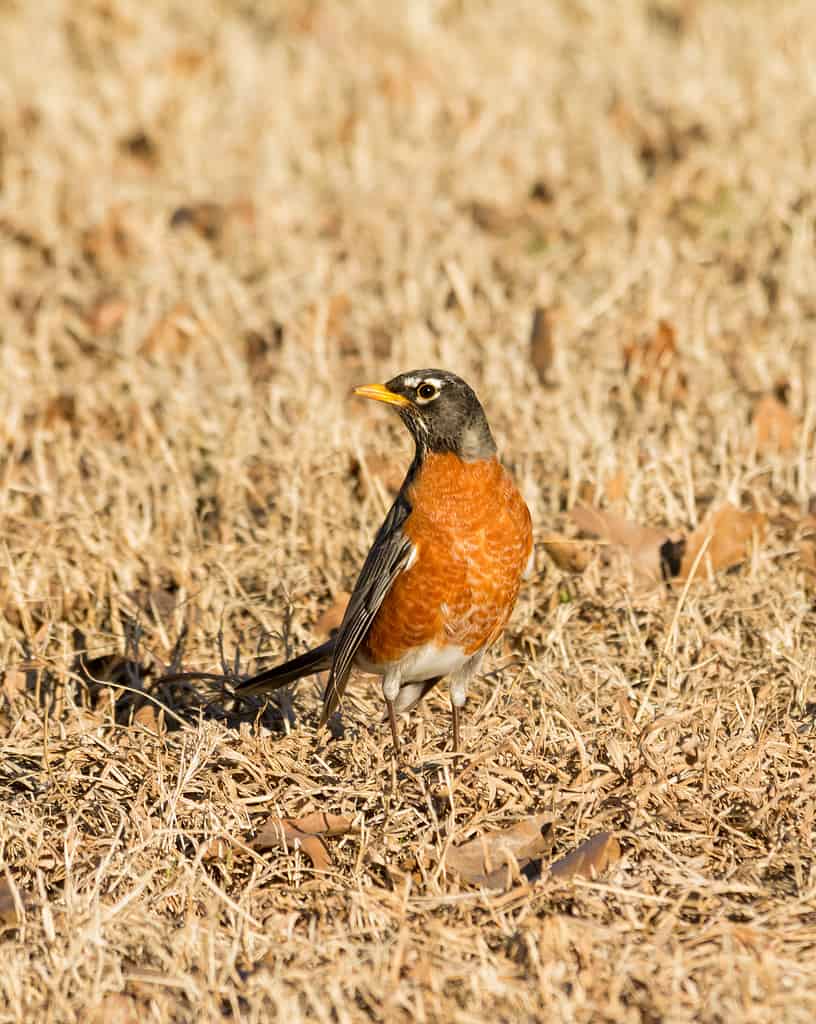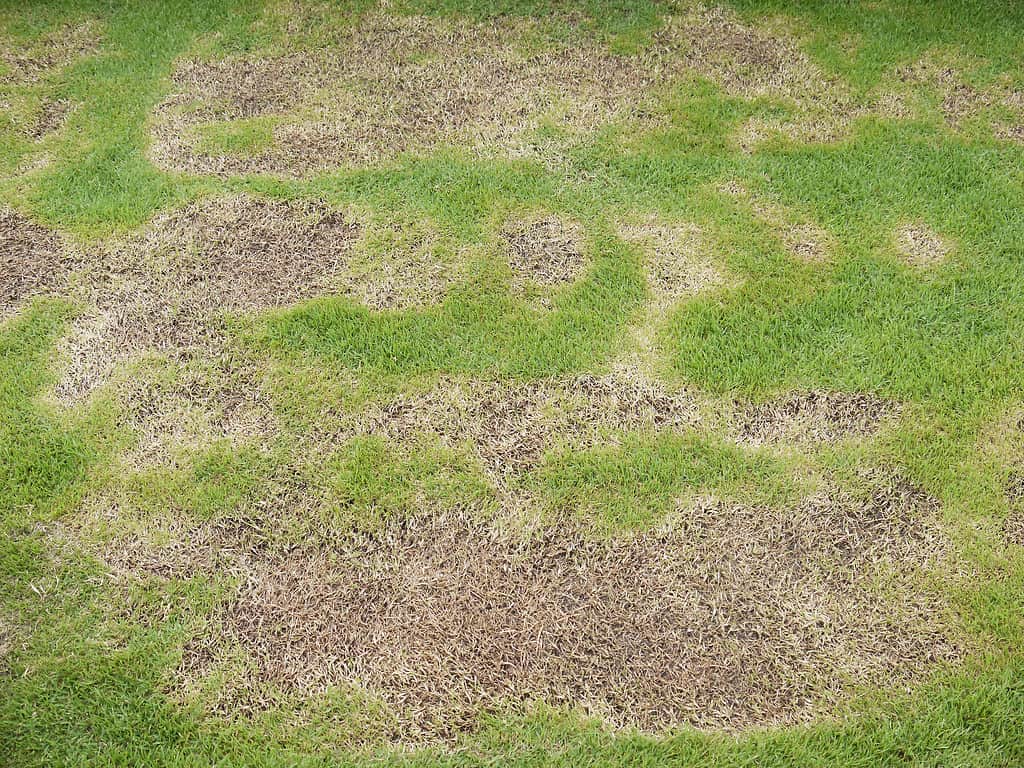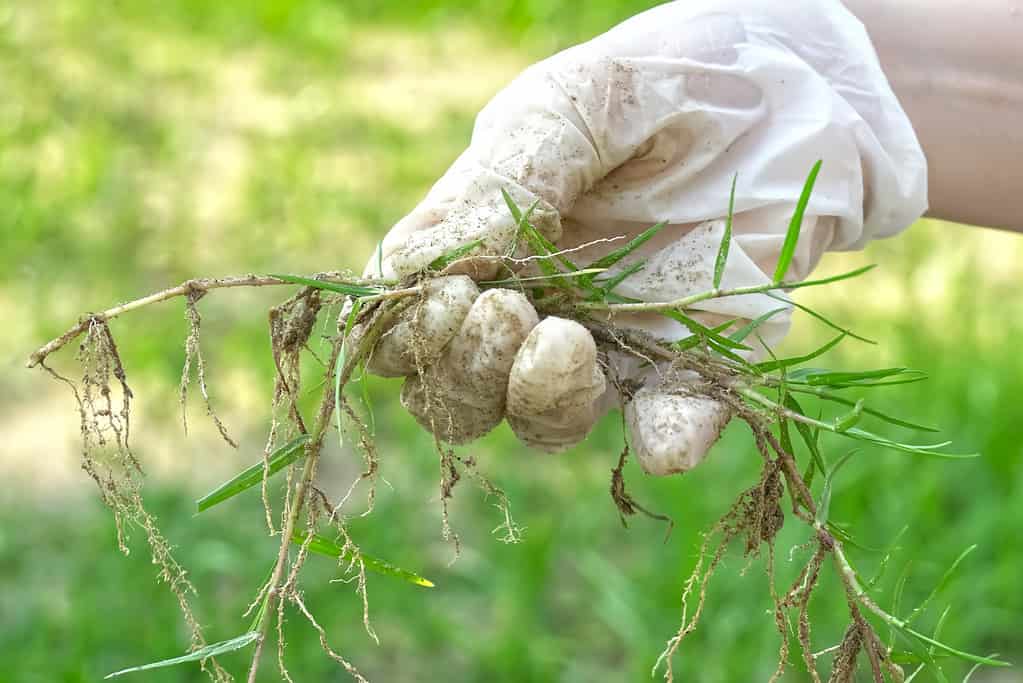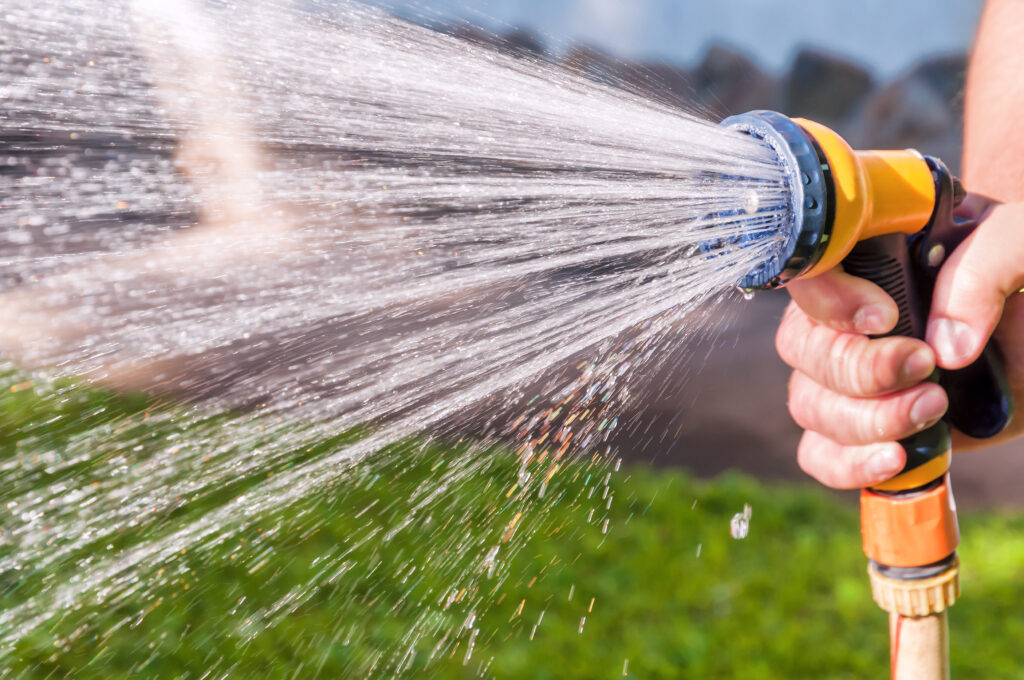Are you tired of wondering if your lawn will green up come spring? Do you have trouble telling the difference between dormant vs. dead grass? Well, fear not, because we’re here to share the dirt with you. There are at least three ways to spot the differences between dormant grass vs. dead grass. So, let’s get to the root of the issue and spruce up that lawn!

Who doesn’t love a lush, green lawn?
©janniwet/Shutterstock.com
Dormant Grass vs. Dead Grass: General Overview
Not all lawn grass turns brown in the winter. It depends on the type of grass you have and the climate you live in. Cool-season grasses, such as Kentucky bluegrass and perennial ryegrass, will often turn brown in the winter months in colder climates, as they enter a period of dormancy in response to low temperatures and reduced sunlight. However, warm-season grasses, such as Bermudagrass and Zoysiagrass, will remain green in the winter in milder climates, as they do not go fully dormant during the winter months. In areas with mild winters, some cool-season grasses may also remain green throughout the winter. It’s important to know what type of grass you have in order to properly care for it throughout the year, including in the winter months.

Many types of warm-season grasses will turn brown in the winter, as they enter a period of dormancy in response to low temperatures and reduced sunlight.
©Melissa E Dockstader/Shutterstock.com
Most grasses go through a period of dormancy. The timing and duration of this period can vary depending on the species of grass and the climate it is growing in. Generally, cool-season grasses, which are adapted to grow in cooler climates, will go dormant during the hot summer months. Warm-season grasses, which are adapted to grow in hotter climates, will go dormant during the cooler winter months. Some grasses, particularly those that are native to tropical or subtropical regions, may not go dormant at all. They will continue to grow year-round, provided they have access to water and nutrients. It’s important to understand the specific needs of the grass species in your lawn or landscape in order to provide it with the appropriate care and maintenance throughout the year.
What is Dormancy?
Dormancy is a natural state of rest or inactivity that some grasses, enter in response to environmental stressors. During dormancy, the plant slows or stops its metabolic activity, and growth and development are suspended until conditions improve. For grass, dormancy is typically triggered by environmental factors such as drought, cold temperatures, or short days. When grass enters dormancy, it will stop growing and may turn brown or golden yellow. The crown and roots of the plant, however, will remain alive and viable. This allows the grass to survive in unfavorable conditions and prepare for regrowth when conditions improve. Dormancy is a temporary state, and grass will generally come out of dormancy when environmental conditions become more favorable.

When grass enters dormancy, it will stop growing and may turn brown or golden yellow.
©Sari ONeal/Shutterstock.com
Dormant Grass vs. Dead Grass: Spotting the Differences
Uniformity
Dormant grass will generally turn brown in a more uniform manner than dead grass. When grass goes dormant, it enters a state of temporary rest in response to environmental stressors such as drought or cold temperatures. During dormancy, the grass will stop growing and turn brown or yellow, but the crowns and roots of the plant will remain alive and viable. This means that when conditions improve, the grass can recover and regrow.

Bermudagrass becoming dormant.
©Viktoria Hans/Shutterstock.com
In contrast, dead grass turns brown in an uneven or patchy manner. Once the roots and crowns of the plant will have died, it is nigh impossible for the grass to recover.
Not all grasses will go dormant, and the timing and duration of dormancy can vary. This is why it s paramount that you know the species of grass in your lawn.

Dead grass turns brown in an uneven or patchy manner.
©komkrit Preechachanwate/Shutterstock.com
Tug Test
The tug test is a method to determine whether your grass is dead or dormant. To perform the tug test, grab a handful of grass and give it a gentle tug. If the grass easily comes out of the ground, it is likely dead. The roots have decayed and the grass will not be anchored in the soil. If the grass stays firmly rooted in the ground, it is likely dormant. The roots and crown of the plant will still be alive and intact.
The tug test is not always a definitive method for determining whether your grass is dead or dormant. It should be used in conjunction with other observations and diagnostic tools. If the grass has turned brown in a uniform manner and there are no signs of pest damage or disease, it is likely that the grass is dormant. However, if the grass has turned brown in patches or there are signs of pest damage or disease, it may be dead or dying.

if you tug too hard, you may end up pulling out healthy grass roots.
©NoonVirachada/Shutterstock.com
Watering
Watering your grass may help you determine whether it is dead or dormant, but it’s not a definitive method. If your grass is dormant, it will respond to watering by regaining its green color and beginning to grow again. This is because during dormancy, the grass is still alive, but it has entered a state of temporary rest in response to environmental stressors such as drought or cold temperatures. When conditions improve, such as when you water the grass, the grass can recover and regrow.
If your grass is dead, watering it won’t bring it back to life. Dead grass has lost its root structure, and watering it won’t revive the dead roots. Instead, you’ll need to remove the dead grass and replace it with new grass.

Watering your grass may help you determine whether it is dead or dormant, but it’s not a definitive method.
©iStock.com/vovashevchuk
Timing is Everything
If the grass is dormant due to cold temperatures, watering it during the winter is unlikely to cause it to turn green. This is because the grass is dormant as a result of low temperatures, not due to a lack of water. In fact, excessive watering during cold weather can actually be harmful to dormant grass, as it can lead to root rot and other problems. When grass is dormant, it will typically stay brown or yellow until warmer temperatures and longer days trigger it to come out of dormancy and begin growing again. Once the grass has come out of dormancy, watering it can help it grow and turn green again.
Not all grasses will go dormant during the winter, and the timing and duration of dormancy can vary depending on the species of grass and the climate it is growing in. If you’re unsure whether or not your grass is dormant or dead, even after employing one or more of the above methods, a lawn care professional or horticulturist can help you make the determination.
The photo featured at the top of this post is © Viktoria Hans/Shutterstock.com
Thank you for reading! Have some feedback for us? Contact the AZ Animals editorial team.







